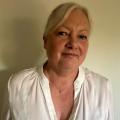
SOUTHEND hospital has among the highest number of unexpected deaths in the country an investigation has revealed.
Professor Brian Jarman, who helped expose Mid-Staffs hospital scandal, where hundreds died due to poor care , has accused the NHS of hiding 19,000 “suspect” deaths by excluding some of them from official statistics.
Southend hospital, which is said to be 17 per cent above the national average for such deaths is behind only Wye Valley Hospital at 19 per cent.
The NHS method classifies just ten trusts in England, including Southend Hospital, as having death rates above the expected range in 2016.
However, Prof Jarman said analysis identified another 24 should also be classified as having high mortality rates
Prof Jarman called for these hospitals to be investigated over “avoidable’” fatalities.
He reached his alarming conclusions after studying official hospital death rate figures using an internationally accepted method.
He calculated there were 32,810 “unexpected” deaths in English hospitals over the past five years. But using the NHS’s preferred method, only 13,627 were classed as such – a difference of 19,183 deaths.
In addition, Prof Jarman classified 34 hospital trusts across England – responsible for 87 acute and community hospitals – as having significantly high death rates last year.
By contrast, the NHS method counted just ten trusts, covering 18 hospitals, as having death rates above “expected” levels.
Prof Jarman is co-director of the Dr Foster Unit at Imperial College London, which monitors NHS performance. Last year Dr Foster was brought in to investigate an unusually large number of deaths from sepsis at Southend Hospital.
At the time Dr Foster, an organisation which analyses data and suggests areas for improvement found the figures to be “within normal limits”.
However, the hospital launched its own internal investigation focusing on sepsis and respiratory disease.
Prof Jarman’s latest investigation found high unexpected death rates correlated with high bed occupancy - above the recognised safe limit of 85 per cent and a lower doctor to patient ratio.
He said: “: “What we’ve found is that not only do those hospitals which have the very high death rates have less than the average doctors per bed than the national average, nearly all of them have more overcrowding than you would expect.
“Over the last 25 years in England we have doubled the number of admissions and we’ve halved the number of beds. If we cut more beds - and particularly if we cut the beds without proving that we have got adequate care in the community - I think that’s an extremely dangerous way to run a health service.”
Southend Hospital’s bed occupancy is at Current occupancy is currently 94 per cent and it has 80 doctors per 100 beds against the average in England of 83 doctors per 100 beds..
Neil Rothnie, medical director for Southend Hospital, said: “Mortality rates at Southend Hospital, in common with trusts across the country, are assessed using the Summary Hospital-level Mortality Indicator . This describes the ratio between the actual number of deaths in a trust compared to the expected number of deaths on the basis of average England figures. We have acknowledged previously that our mortality indicator places us in the “higher than expected” group of trusts with an indicator of 1.17 in comparison to the average of 1.0.”
Mr Rothnie offered patients reassurance. He said: “The Summary Hospital-level Mortality Indicator is not a measure of quality of care and we are following the National Quality Board’s Framework for NHS Foundation Trusts on identifying, reporting, investigating and learning from deaths in care.
“We have adopted a standardised and transparent approach to learning from the care provided to patients who die. As part of the process the trust will be publishing a dashboard which provides information on the outcomes of case note reviews of patients who have died.”
He added: “”We are sharing best practice across Southend and with our partner Trusts at Basildon and Mid Essex. Standardisation of processes and pathways is key to our local learning and improvement. Our review outcomes will be published as per national guidance.”
Dr David Sollis, Chief Executive of Healthwatch Essex also urged patients not to worry unnecessarily
He said: “It’s right to be vigilant and to ask local hospitals to provide assurances that checks and balances are in place to monitor high mortality rates.
“However, we also need to be cautious about simply relying on raw data as an indicator. Through our work with Carers, and as we build up to our latest research study into End of Life care, we have come to understand that the picture is varied across the county”
Dr Sollis added: “ The figures may also indicate that some hospitals are seeing a far higher number of deaths after surgery because they perform a greater number of high-risk surgical interventions in severely ill patients.”



Comments: Our rules
We want our comments to be a lively and valuable part of our community - a place where readers can debate and engage with the most important local issues. The ability to comment on our stories is a privilege, not a right, however, and that privilege may be withdrawn if it is abused or misused.
Please report any comments that break our rules.
Read the rules hereLast Updated:
Report this comment Cancel